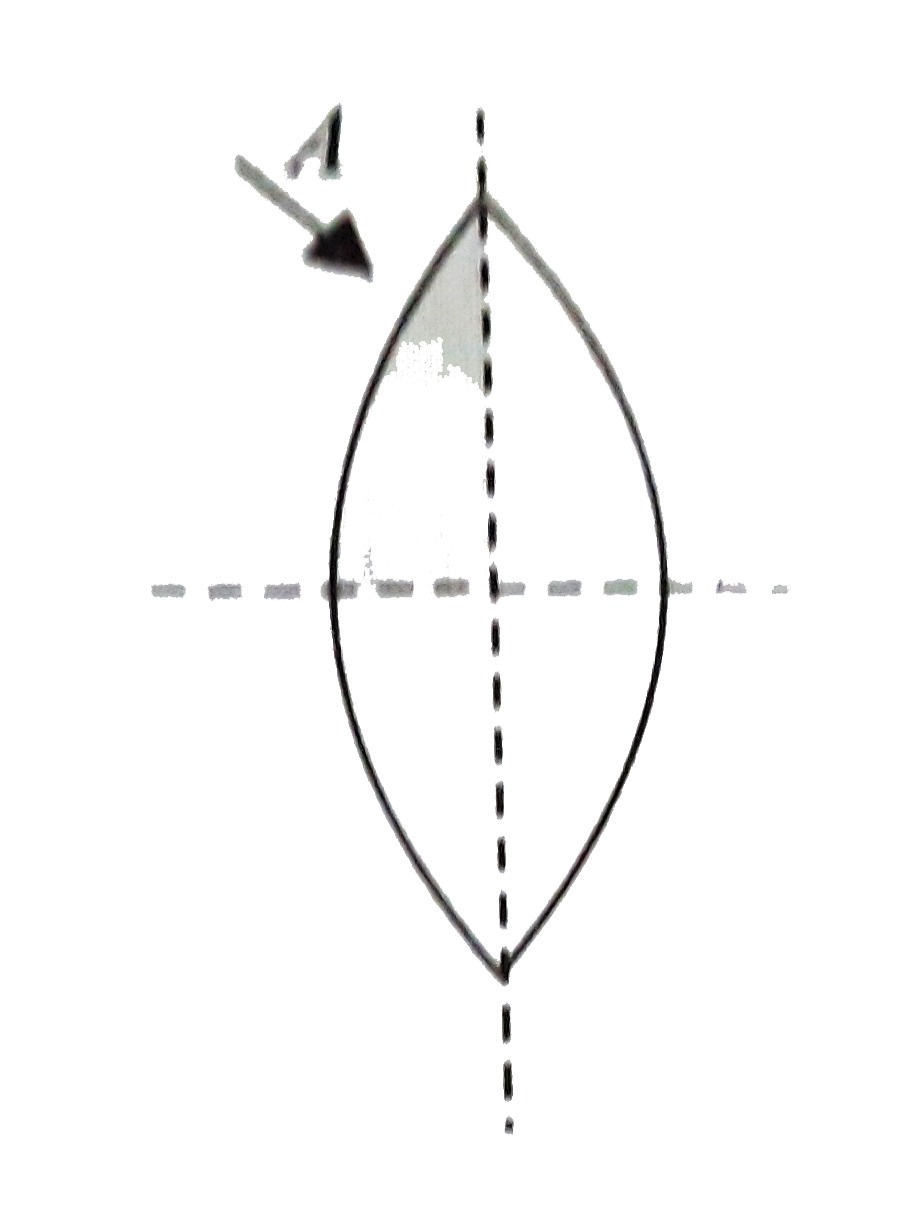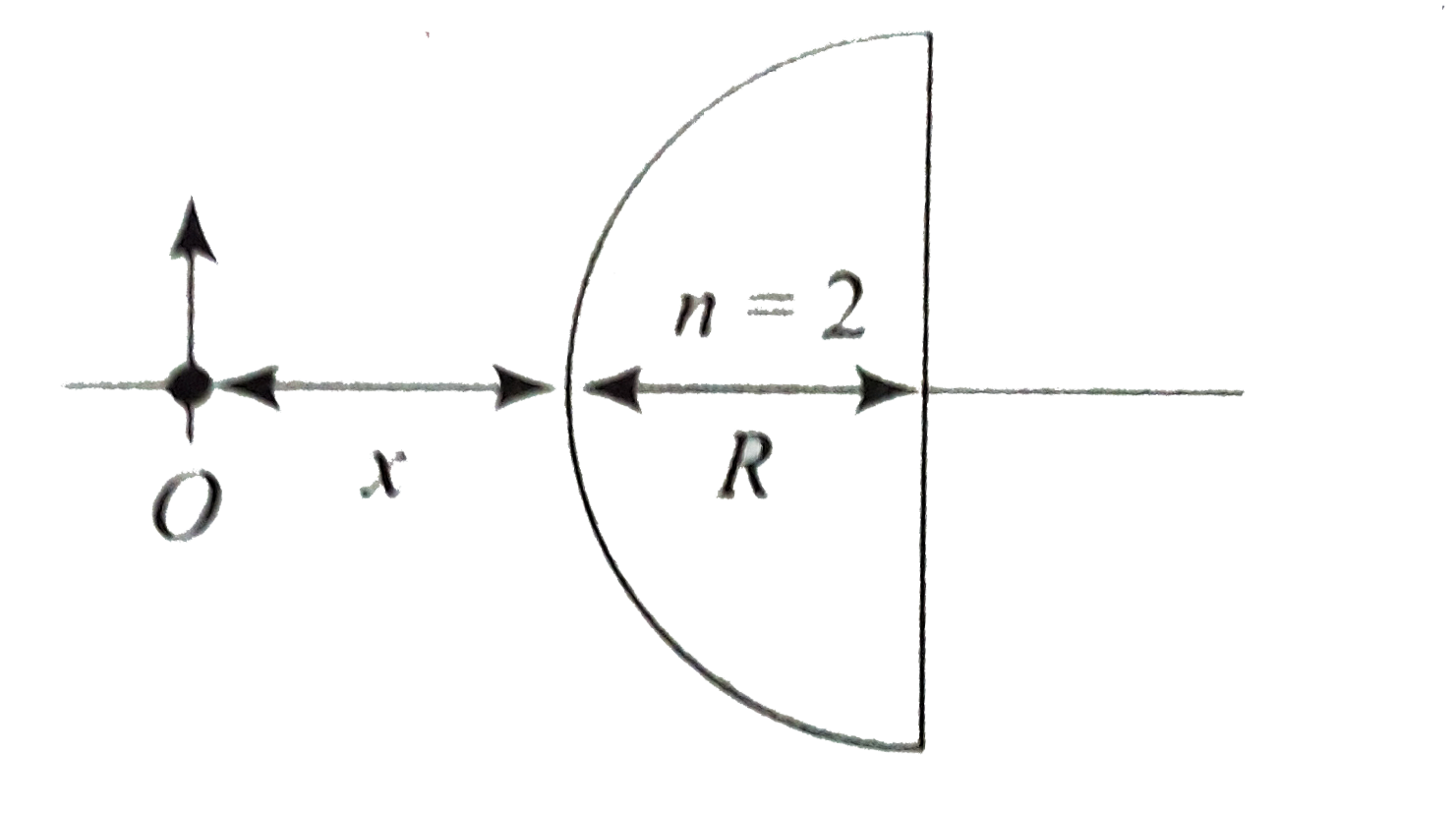A convex lens of focal length f cut into parts first horizontally and then vertically. Find the focal length of part A of the lens, as shown:

f
4f
2f
The correct Answer is:d.
When cut horizontally, focal length remains same as is clear from the following formula:
(i)
When cut vertically, focal length is doubled.
Combining these factors,
Topper's Solved these Questions
- BOOK - CENGAGE PHYSICSCHAPTER - GEOMETRICAL OPTICSEXERCISE - Assertion-Reasoninig2videos
GEOMETRICAL OPTICS
- BOOK - CENGAGE PHYSICSCHAPTER - GEOMETRICAL OPTICSEXERCISE - Linked Comprehension51videos
GEOMETRICAL OPTICS
- BOOK - CENGAGE PHYSICSCHAPTER - GEOMETRICAL OPTICSEXERCISE - Subjective26videos
GEOMETRICAL OPTICS
- BOOK - CENGAGE PHYSICSCHAPTER - FRICTIONEXERCISE - QUESTION BANK1videos
FRICTION
- BOOK - CENGAGE PHYSICSCHAPTER - GRAVITATIONEXERCISE - Question Bank39videos
GRAVITATION
Similar Questions
Consider a transparent hemispher (n=2) in front of which a small object is placed in air (n=1) as shown in figure.

Q. For which value of x, of the following , will the final image of the object O be virtual?02:35View SolutionConsider a transparent hemisphere (n=2) in front of which a small object is placed in air (n=1) as shown in figure.

Q. Consider a ray starting from O which strikes the spherical surface at grazing incident (i=90∘). Takin x=R, what will be the angle (from normal) at which the ray may emerge from the plane surface.01:48View SolutionA ray of light is falling on a glass sphere of μ=√3 such that the incident ray and that the incident ray and the emergent ray, when produced, intersect at a point on the surface of the sphere. Find the value of angle of incidence( in degree).
02:22View SolutionA rope of length L and mass M is being pulled on a rough horizontal floor by a constant horizontal force F=mg. The force is acting at one end of the rope in the same direction as the length of the rope. The coefficient of kinetic friction between rope and floor is 1/2. Then the tension at the midpoint of the rope is
03:43View SolutionA body weighs W newton at the surface of the earth. Its weight at a height equal to half the radius of the earth will be kW9. Find k.
03:09View SolutionA convex lens has a focal length f . It is cut into two parts along the dotted line as shown in figure. The focal length of each part will be
04:08View SolutionA diverging lens of focal length F is cut into two idential parts, each forming a plano concave lens, Fig. What is the focal length of each part ?
01:59View SolutionA convex lens of focal length 'f' is placed in contact with a concave lens of the same focal length. The equivalent focal length of the combination is
03:25View Solutionएक उत्तल लेंस को जिसकी फोकस दुरी f है, प्रकाशिक केंद्र पर मुख्य अक्ष एक अनुदिश काटने पर प्राप्त दोनों भागों की फोकस दुरी होगी :
02:12View SolutionFocal length of convex lens is f. If this lens is cut along parallel to its length in two equal parts then focal length of its half part will be:
04:34View SolutionA double convex lens of focal length is cut into 4 equal parts One cut is perpendicular to the axis and the other is parallel to the axis of lens. The focal length of each part is
05:59View SolutionIf we added half part of each convex and concave lens of a focal length f as shown the resolution of focal length will be
01:48View SolutionA convex lens has a focal length f. It is cut inti two parts along the dotted lines as shown ii figure. The focal length of each part will be …....... .
 03:02View Solution
03:02View SolutionA convex lens of focal length f is put in contact with a concave lens of the same focal length. The equivalent focal length of the combination is :
View SolutionA convex lens has a focal length f. It is cut into two parts along a line perpendicular to principal axis. The focal length of each part is
02:35View Solution

